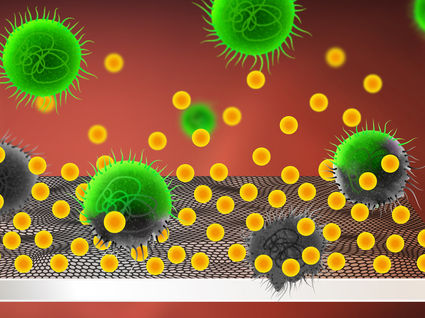Plastics from renewable raw materials
Body automatically breaks down implants
Researchers from Graz University of Technology, together with colleagues from the Medical University of Graz, Vienna University of Technology and the University of Natural Resources and Life Sciences, Vienna, have managed to develop absorbable implants to promote bone healing which are broken down by the body. In this way, painful multiple operations – especially in children – can be avoided in the future. The “BRIC - BioResorbable Implants for Children” project, funded by the Austrian Research Promotion Agency (FFG), was successfully completed at the end of August.
The goal was finally achieved after four years of research. Scientists from Graz University of Technology and their colleagues in Graz and Vienna finally concluded the development stage of the BRIC – Bio Resorbable Implants for Children project. Bioresorbable implants are implants that are resorbed by the body over time. In contrast to traditional implants, such as plates, screws or pins, which have to be surgically removed after a certain time, bioresorbable implants do not have to be surgically removed. The BRICs are to be used in children, who suffer particularly from each surgical intervention.
Detailed work over many years was necessary for the success of this development. The project was co-ordinated by Dr Annelie Weinberg at the Department of Paediatric Surgery in Graz. Apart from the Medical University of Graz, the project consortium on the academic side consisted of two working groups made up by Graz University of Technology, Vienna University of Technology, and even the University of Natural Resources and Life Sciences, Vienna. The participation of partners AT&S and Heraeus demonstrates the great interest shown by industry in the results.
No negative affects on the body
The two Graz University of Technology teams led by Martin Koller, responsible for the biotechnology part, and Franz Stelzer, whose team processed the biopolymers into implants, managed to develop microbial biopolyesters – so-called polyhydroxyalkanoates, known as PHAs, which can be processed into implants. “The production is completely independent of fossil resources, so there are no negative affects on the body. The implant is produced by bacteria and can be absorbed by the human body after it has fulfilled its task,” said Martin Koller. Alternative biopolymers, such as polylactic acid, in contrast to PHAs, lead to a hyperacidity of the organism and bring about chronic inflammation. PHAs, on the other hand, are high-grade materials whose biotechnological production is based on renewable raw materials.
Another advantage of the new implants is that they are more biocompatible than the previously used steel or titanium materials and thus promote the bone healing process. Furthermore, the speed of their breakdown by the body can be controlled by means of the implant’s precise composition. The breakdown of the implant should take place at the same speed as the bone heals.
The materials are in the development stage and their material properties and biodegradation rates are currently being tested.
Most read news
Topics
Organizations
Other news from the department science

Get the life science industry in your inbox
By submitting this form you agree that LUMITOS AG will send you the newsletter(s) selected above by email. Your data will not be passed on to third parties. Your data will be stored and processed in accordance with our data protection regulations. LUMITOS may contact you by email for the purpose of advertising or market and opinion surveys. You can revoke your consent at any time without giving reasons to LUMITOS AG, Ernst-Augustin-Str. 2, 12489 Berlin, Germany or by e-mail at revoke@lumitos.com with effect for the future. In addition, each email contains a link to unsubscribe from the corresponding newsletter.


















































